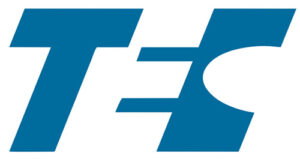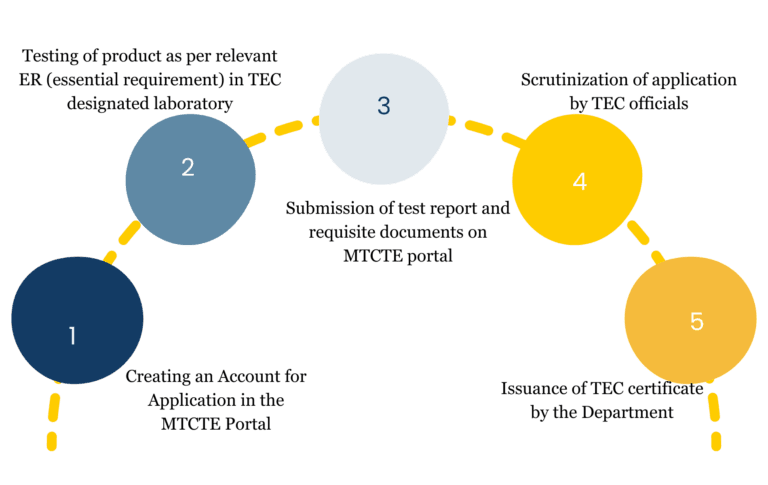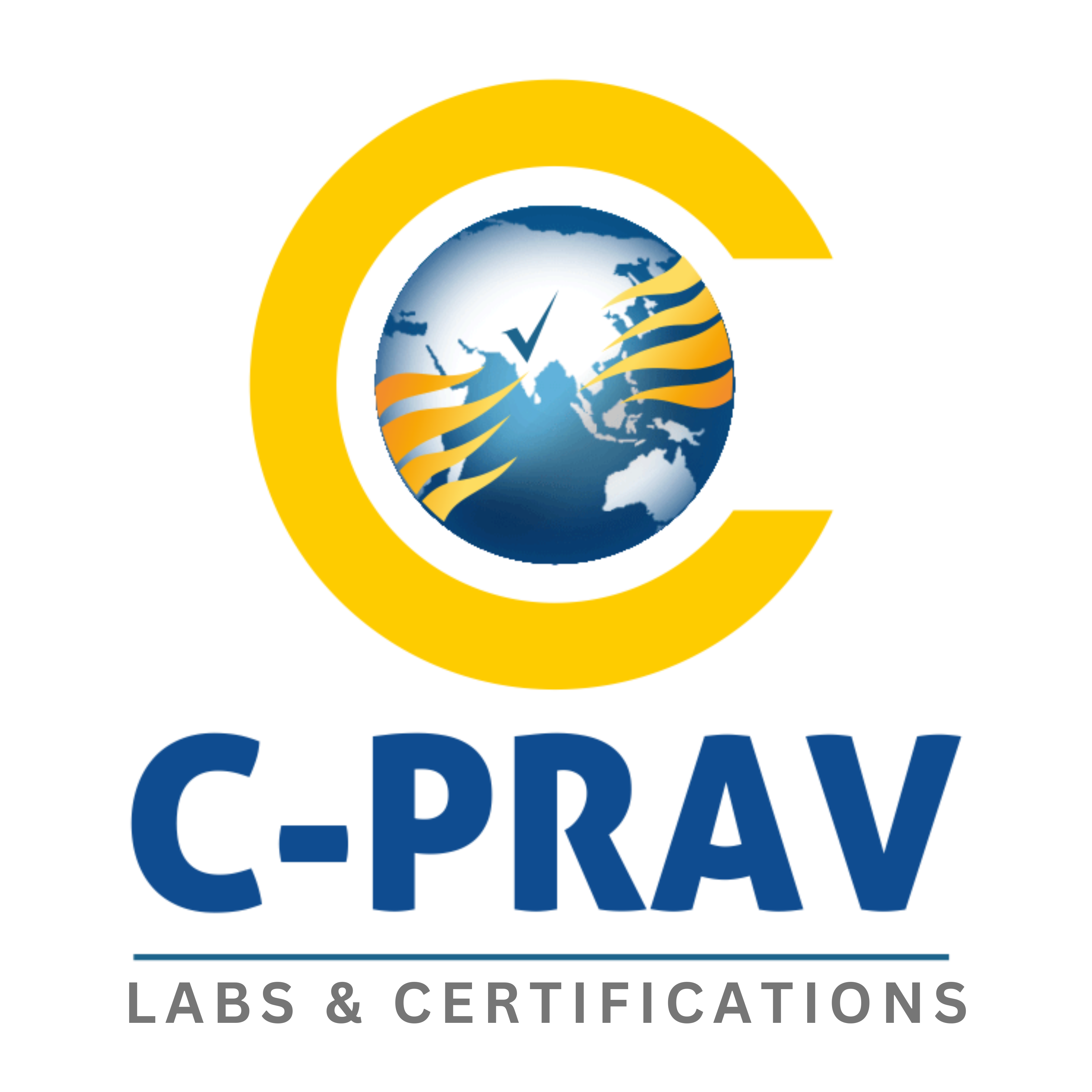Telecommunication Engineering Centre(TEC)
Empowering Telecommunication: An Overview of TEC Certification and MTCTE Scheme
Ensure Indian market access with Our TEC Services

An Introduction To TEC
Telecommunication Engineering Centre (TEC), New Delhi, under Department of Telecommunications (DoT), is the Telegraph Authority and Telecommunications regulator in India.
TEC enforces the Mandatory Testing and Certification of Telecommunication Equipment (MTCTE) scheme to regulate telecommunication and network products.
Accredited labs in India, designated by TEC (CABS) and recognized by NABL (ILAC member), are authorized to conduct equipment testing.
Based on the test reports provided by these labs, TEC issues the necessary certification for the products.
Mandatory testing and Certification of Telecommunication Equipment (MTCTE)
In September 2017, the Ministry of Communications mandated Mandatory Testing and Certification of Telecommunication Equipment (MTCTE) through the “Indian Telegraph (Amendment) Rules.”
Under MTCTE, TEC releases standards that are called Essential Requirements (ERs) for the respective product lines.
In MTCTE, TEC has notified 55 product lines in four phases so far as of September 2021.
There are a few products for which are yet to be notified, but TEC has released the ERs for the manufacturers to be prepared.
Products Subjected to MTCTE
Phase wise product categories covered in MTCTE. Click on the links below to download the files:
Phase III & IV List of Products
However, there are a few products that have been withdrawn from the above lists. They are:
Vehicular Radio Broadcasting Receivers – That are shipped along with the vehicle only
Vehicular Tracking devices – That are shipped along with the vehicle only
Mobile user equipment/mobile handset;
Server;
Smart Watch;
Smart Camera and
Point of Sale devices
Who Can Apply?
The Original Equipment Manufacturers (OEM) owning the products intellectual property (in other words owning the design and R&D) of the telegraph equipment would need to apply for the TEC certification under MTCTE. The OEM/ODM can be from any part of the world but the applicant who files the application with TEC would have to an Indian registered organization, which can be an Indian subsidiary of the OEM/ODM or any other third party which has a registered office in India.
Certification Process

Related Services
Click here to know about the Bureau Of Indian Standard (BIS)
Click here to know about the Telecommunication Engineering Centre(TEC)
Click here to know about the Wireless Planning & Coordination (WPC)
Click here to know everything about ISI Certification Scheme
Click here to know everything about Bureau Of Energy Efficiency (BEE)
Click here to know everything about E-Waste Management
Click here to know everything about Automotive Industry Standards (AIS)
Click here to know everything about Legal Metrology
Click here to know everything about MNRE
Click here to know everything about ATEX/PESO
Other Countries
Click here to know about the Approval Process for the Canadian Market
Click here to know about the SRCC certifications
Click here to know everything about CE Marking
Click here to know everything about E Mark
Click here to know everything about Type Approval for Fiji
Click here to know everything about Type Approval for Hong Kong
Click here to know everything about India Approvals
Click here to know everything about PSE Mark
Click here to know everything about MIC Certificate
Click here to know everything about Type Approval for Malaysia
Click here to know everything about Type Approval for Russia
Click here to know everything about Type Approval for Saudi Arabia
Click here to know everything about Type Approval for South Africa
Click here to know everything about Type Approval for Singapore
Click here to know everything about Type Approval for South America
Click here to know everything about Type Approval for South Korea
Click here to know everything about NCC Certificate
Click here to know everything about BSMI Mark
Click here to know everything about Type Approval for USA
Company Strengths at a glance
Why C-PRAV?


how C-PRAV Can help?
C-PRAV has vast experience both on the technical qualification and experience in handling TEC projects. Our professional team will assist you with end to end coverage of services – samples handling to certificate issue.
Comprehensive Support
We handle the entire documentation related to the Registration process.
Support and co-ordinate for the Registration of the Manufacturer with TEC
Local Representation
C-PRAV ensures product testing at TEC-designated labs, liaising for technical issues, timely completion of tests.
We have strong technical knowledge, liaise with TEC, handle documentation, agreements, and online submission.
We Support as an Authorized Indian (Local) Representative for the Foreign Manufacturing Unit.
On-Going Support
Co-ordinate and liaise with TEC for any clarifications addressing queries raised by TEC
Support any additional miscellaneous/incidental works including technical support throughout the approval process
We Solve Real Problems
Some of the TEC Standard
CISPR 32 - Electromagnetic compatibility of multimedia equipment - Emission requirements
CISPR 32:2015+A1:2019 applies to multimedia equipment (MME) as defined in 3.1.24 and having a rated r.m.s. AC or DC supply voltage not exceeding 600 V. This publication covers two classes of MME (Class A and Class B).
CISPR 14 - Requirements for household appliances, electric tools and similar apparatus
CISPR 14-1:2020 specifies the requirements that apply to the emission of radio-frequency disturbances in the frequency range 9 kHz to 400 GHz from appliances, electric tools and similar apparatus as defined below, whether powered by AC or DC (including a battery).
CISPR 11 - Industrial, scientific and medical equipment
CISPR 11:2024 applies to industrial, scientific and medical electrical equipment operating in the frequency range 0 Hz to 400 GHz and to domestic and similar appliances designed to generate and/or use locally radio-frequency energy. This document covers emission requirements related to radio-frequency (RF) disturbances in the frequency range of 9 kHz to 400 GHz.


